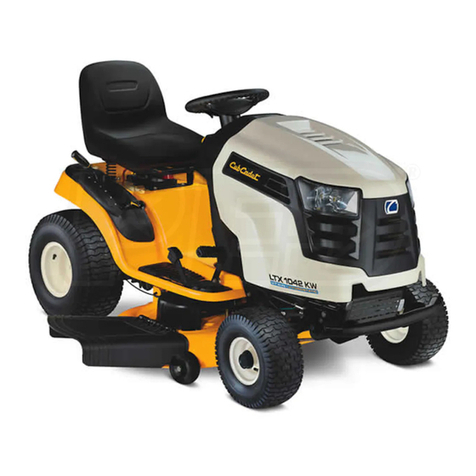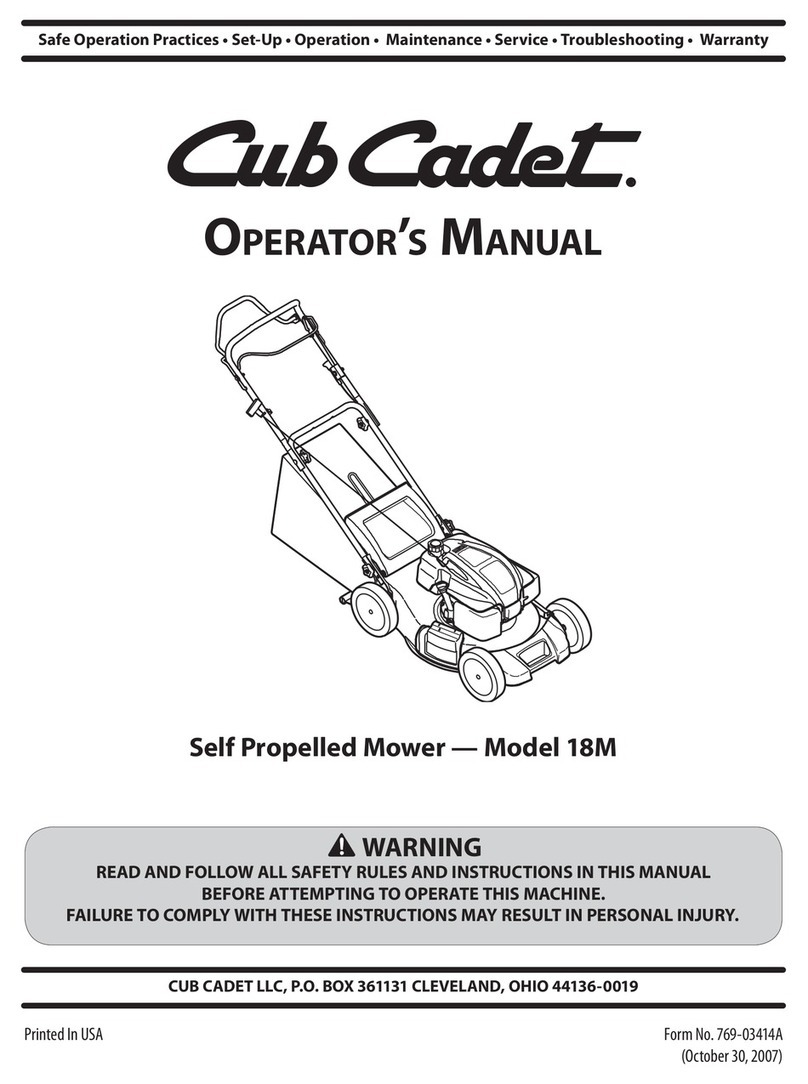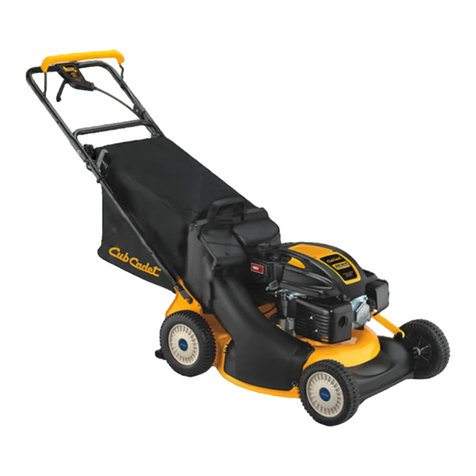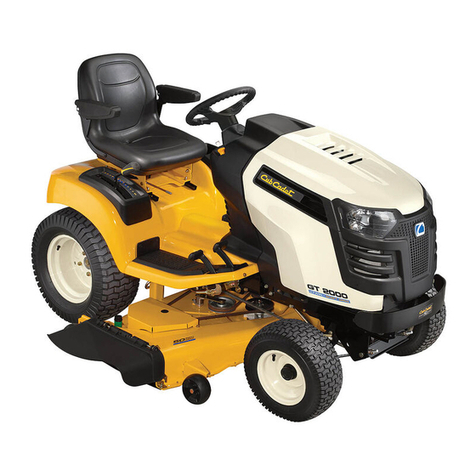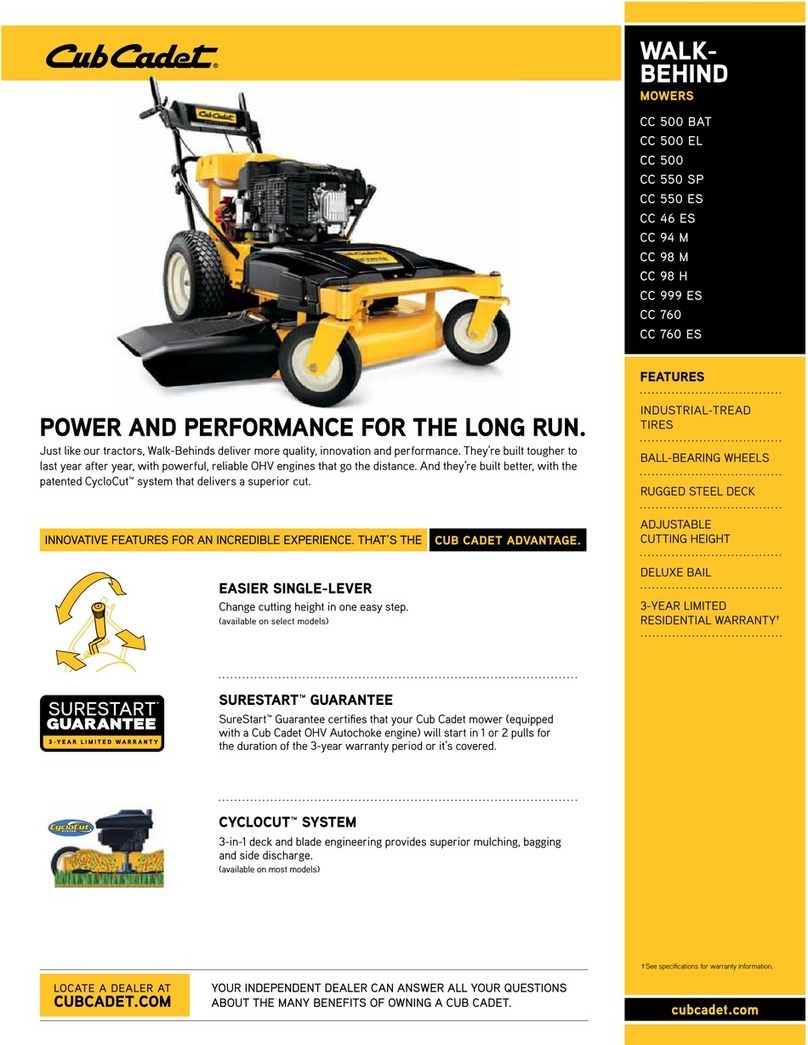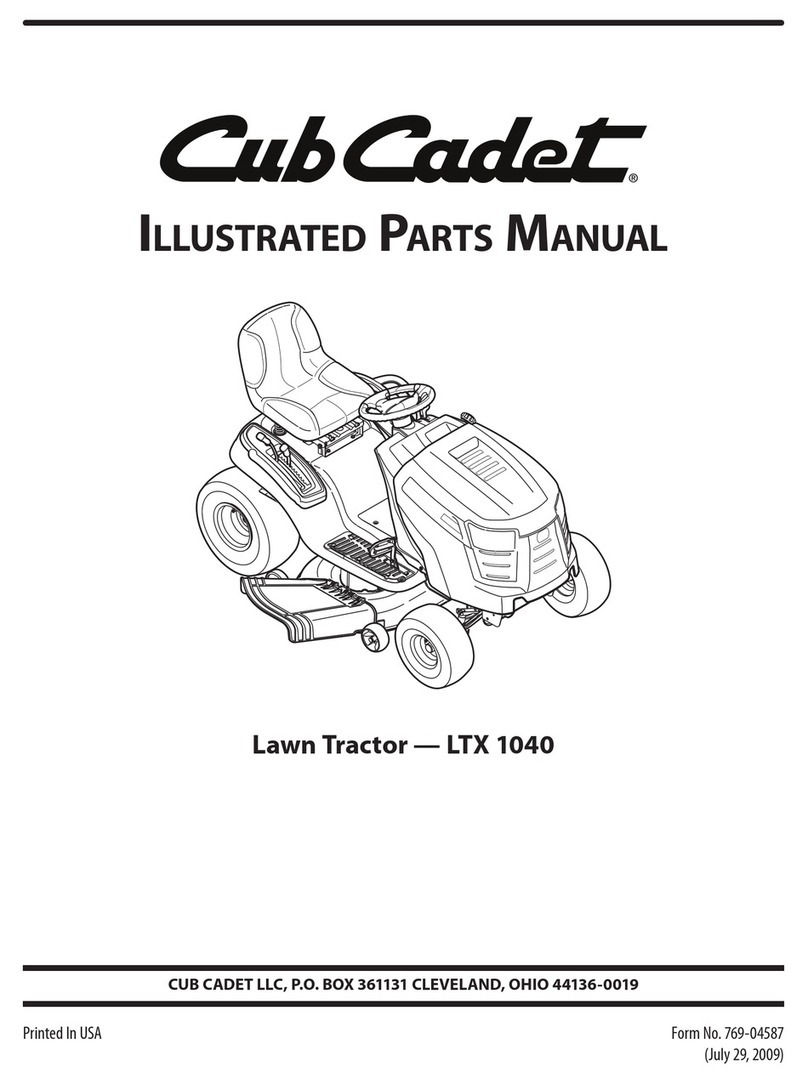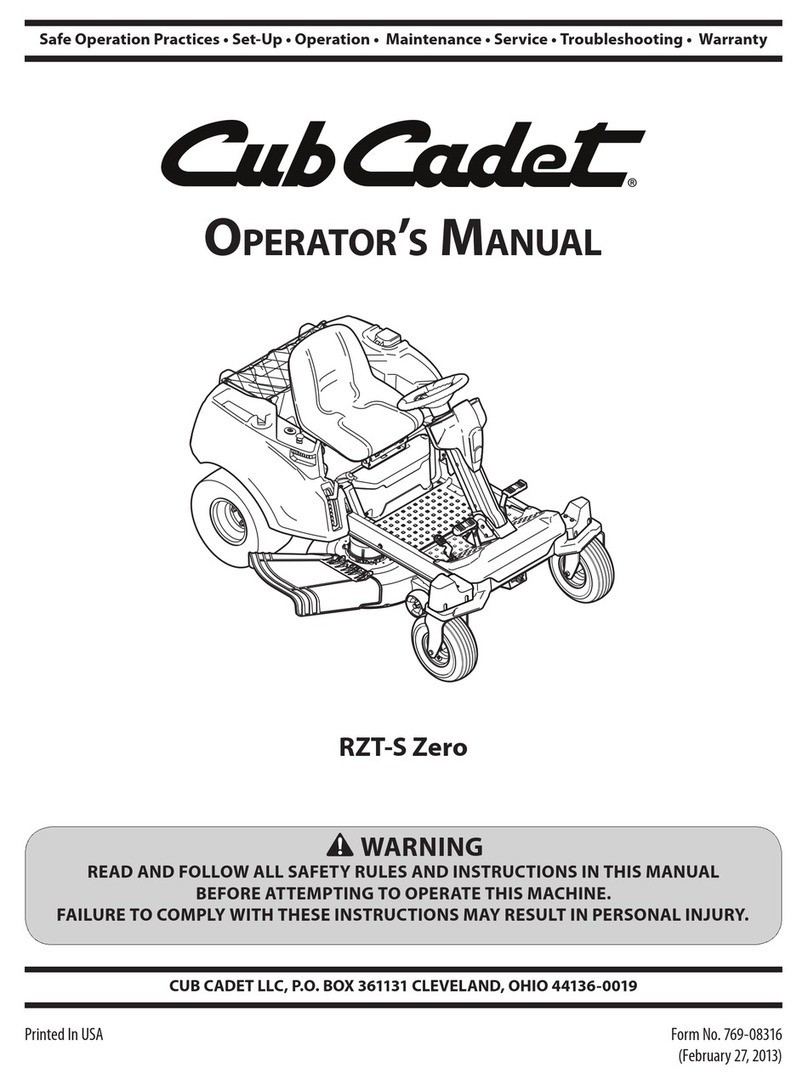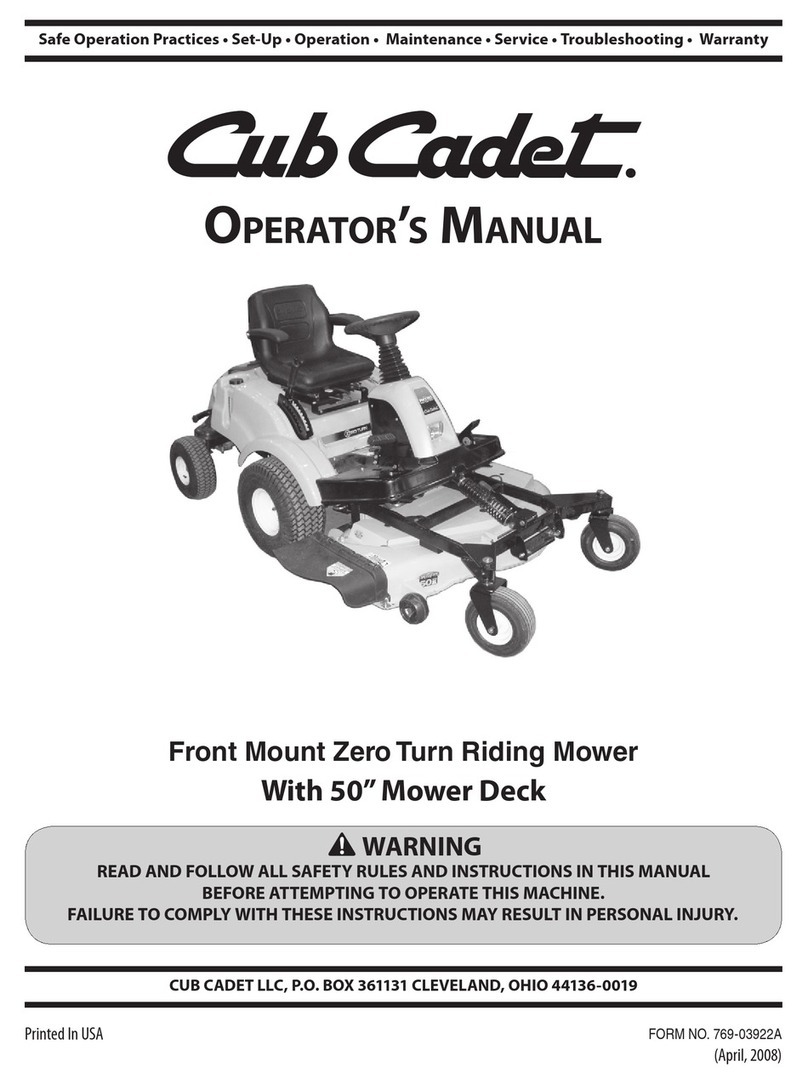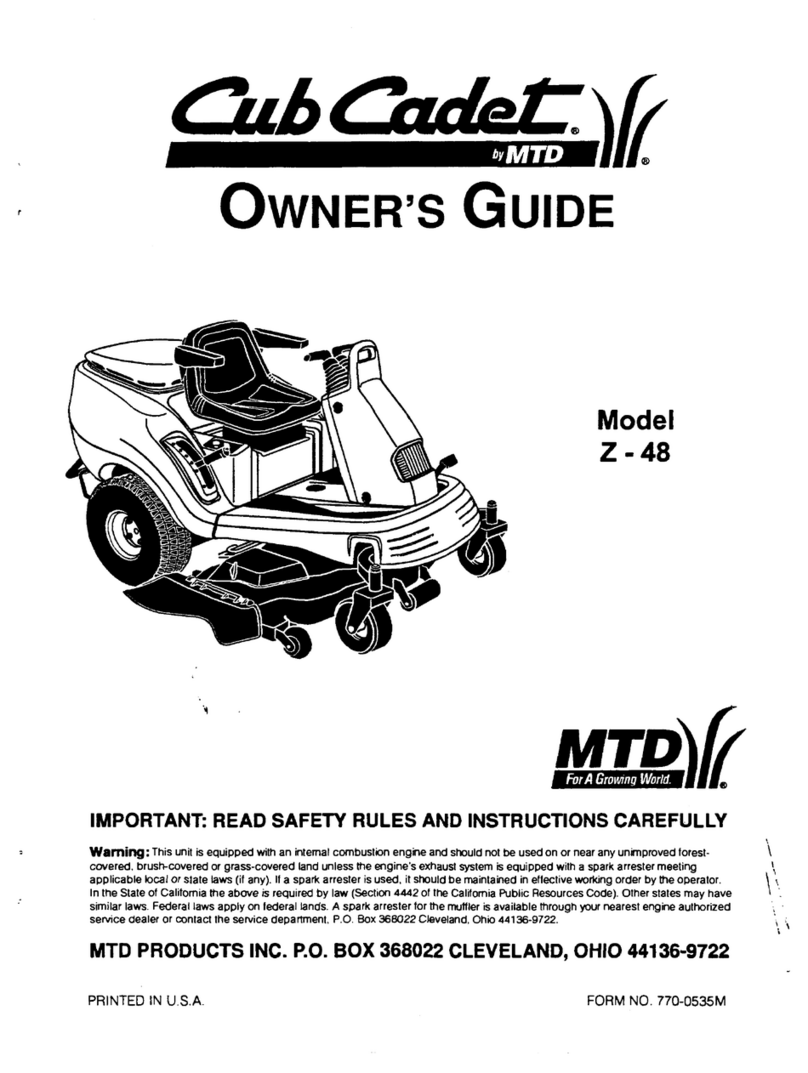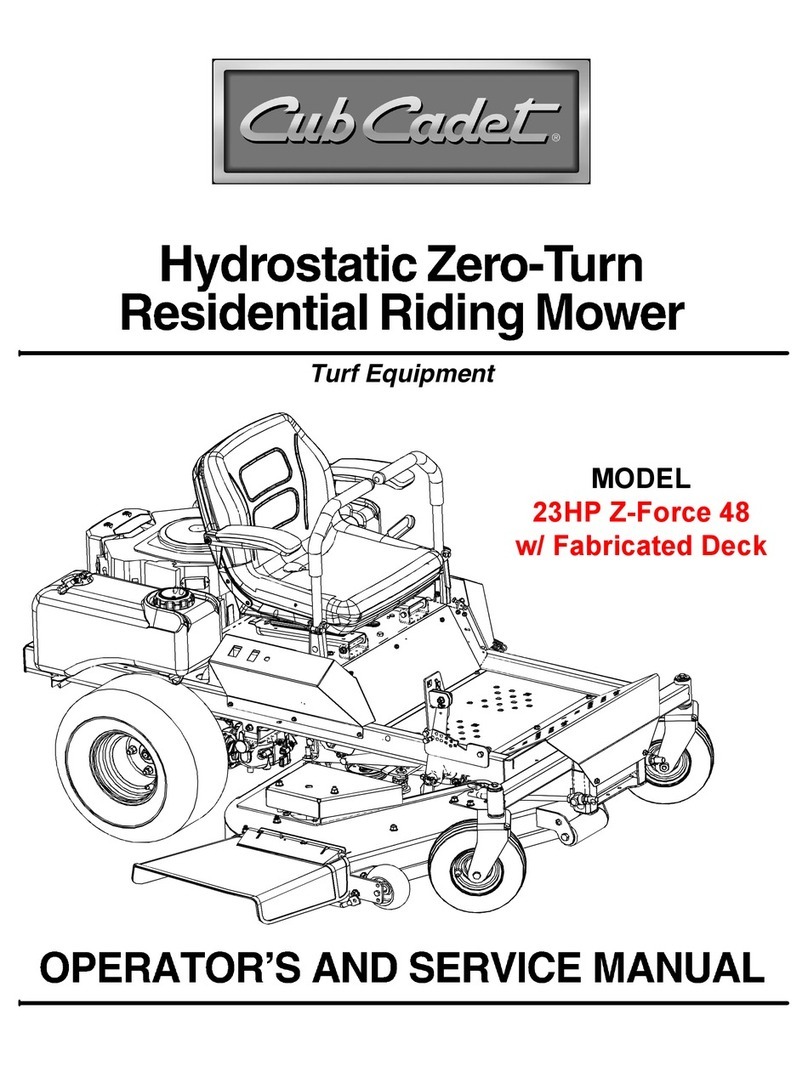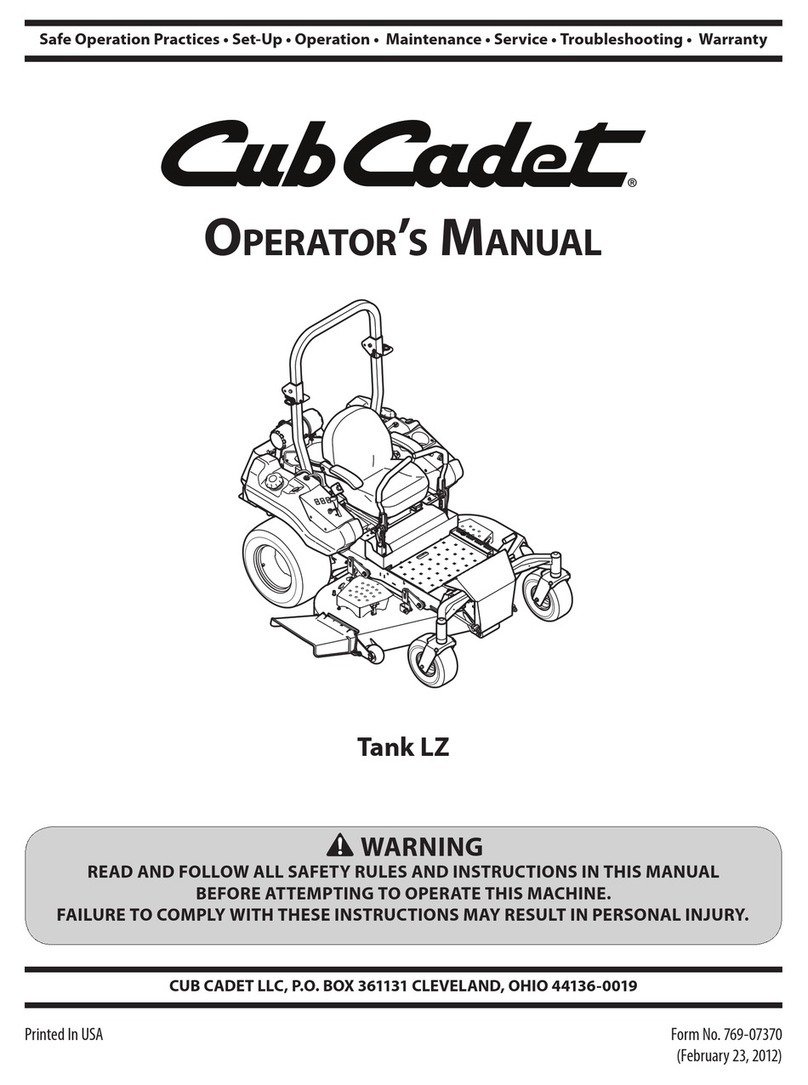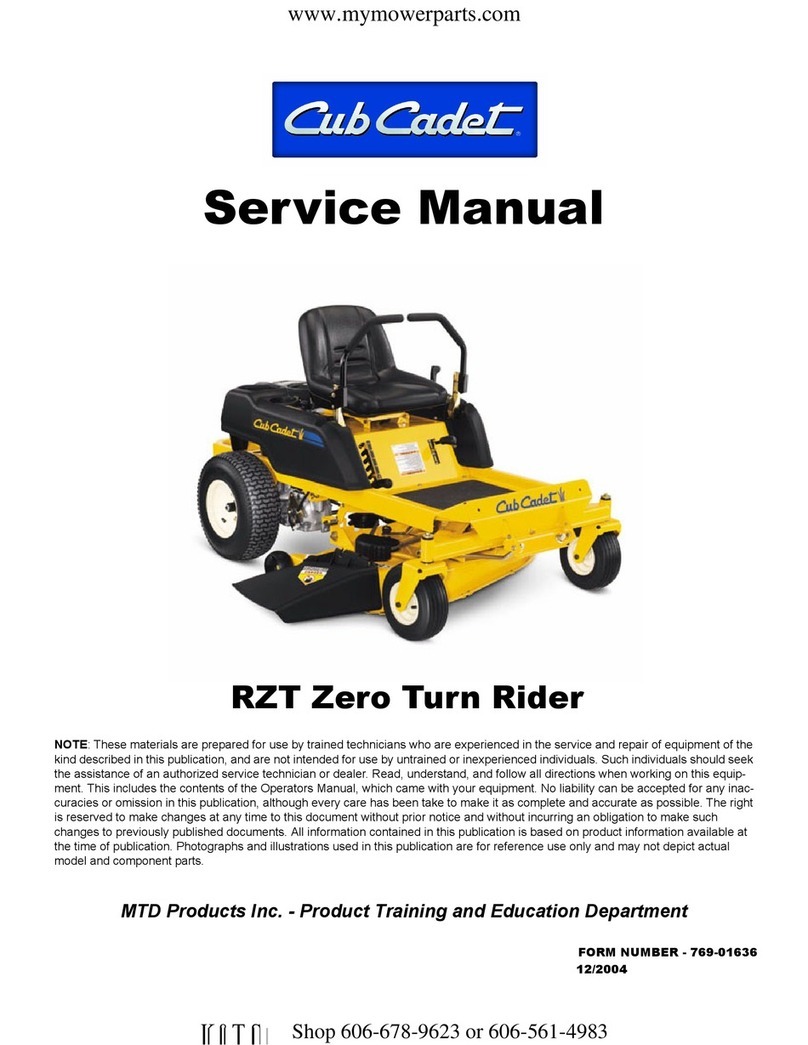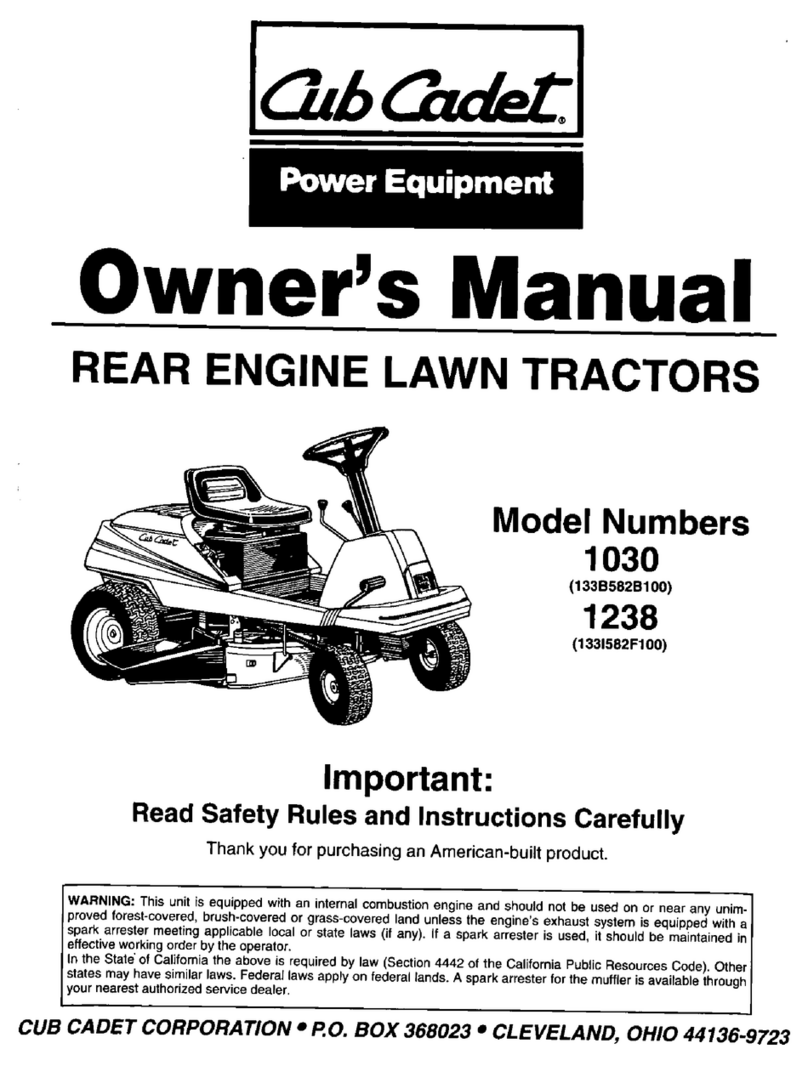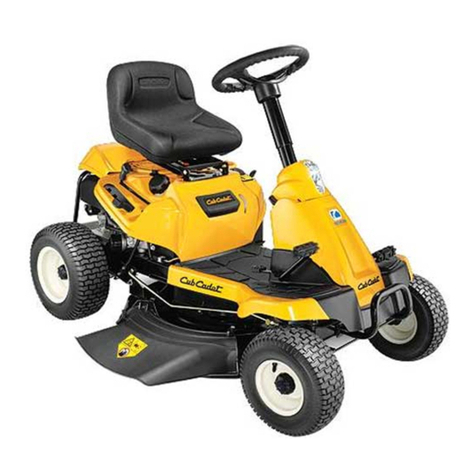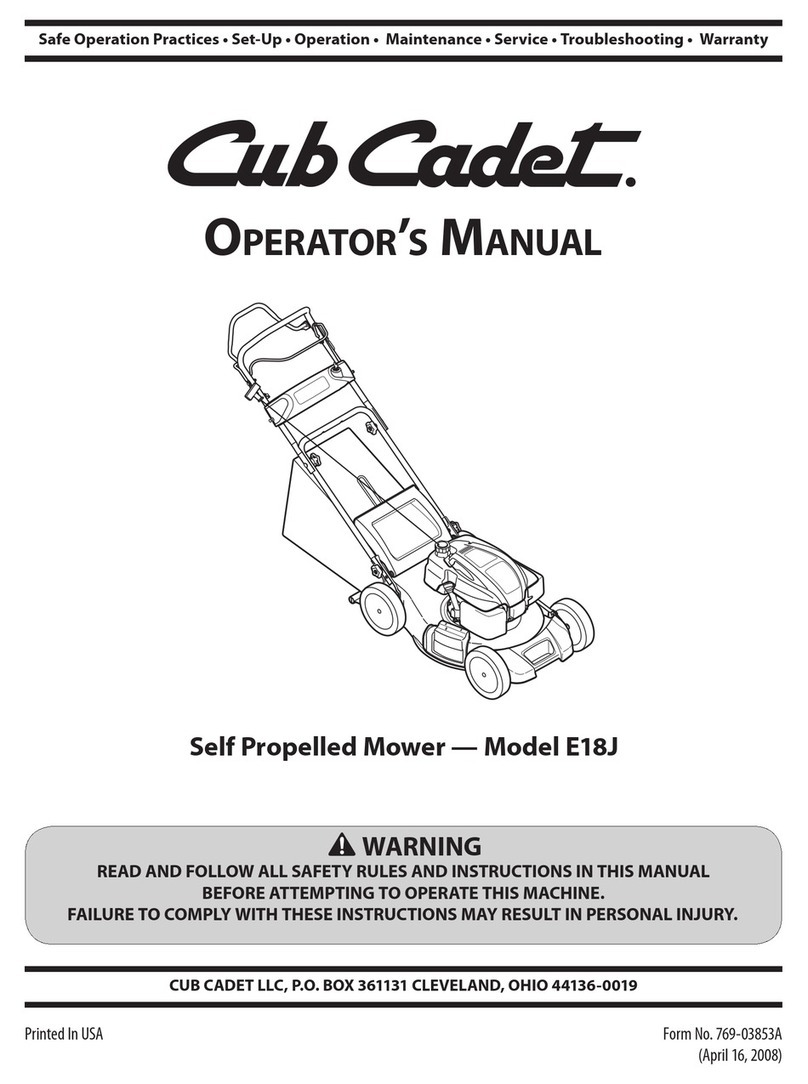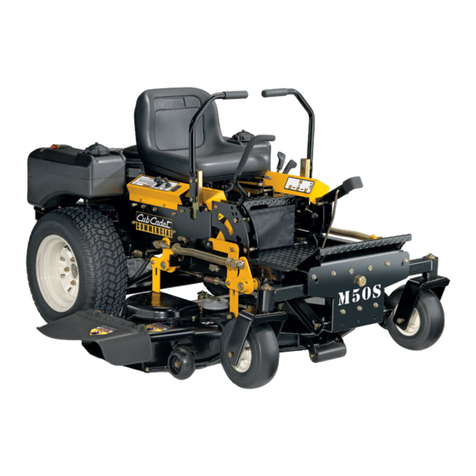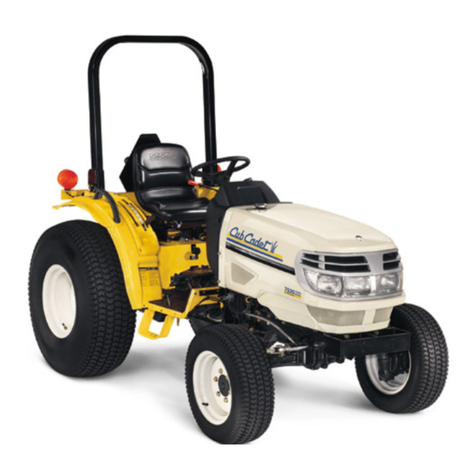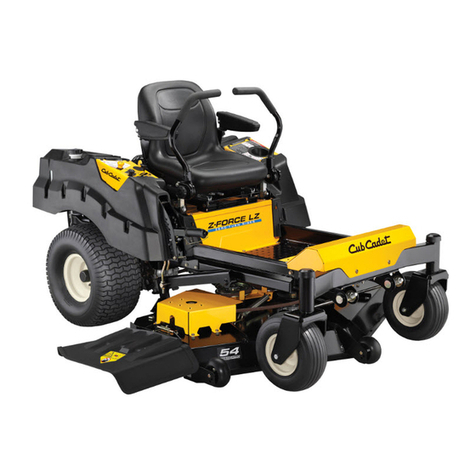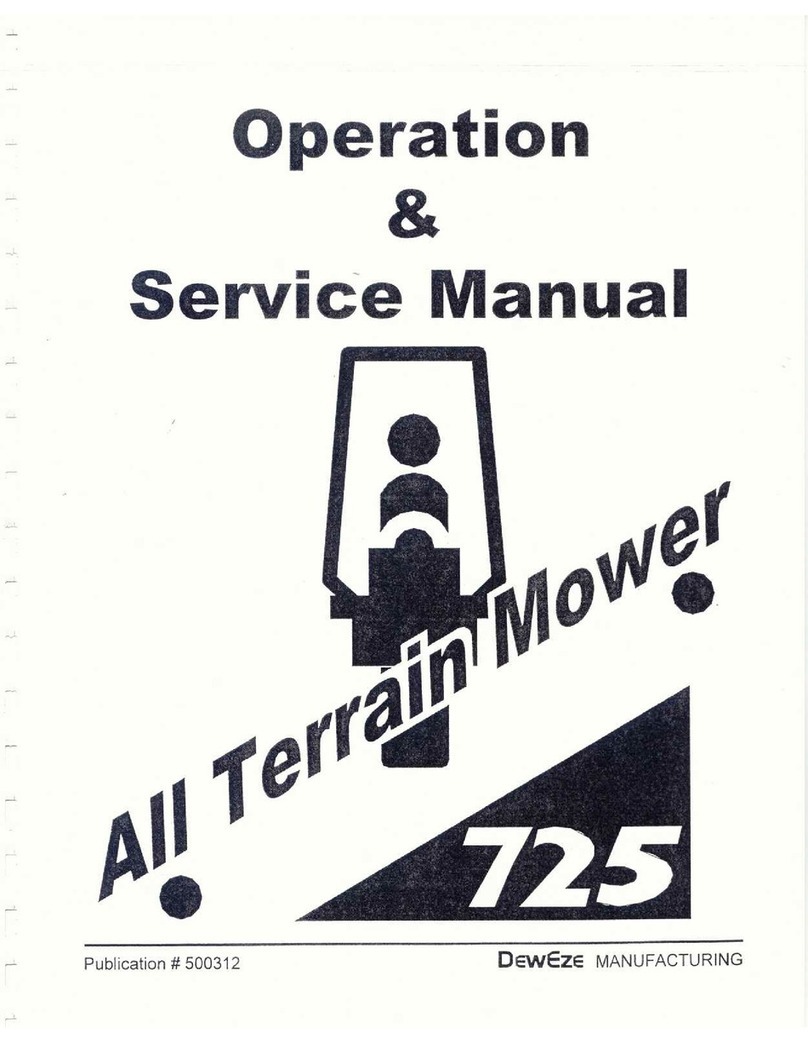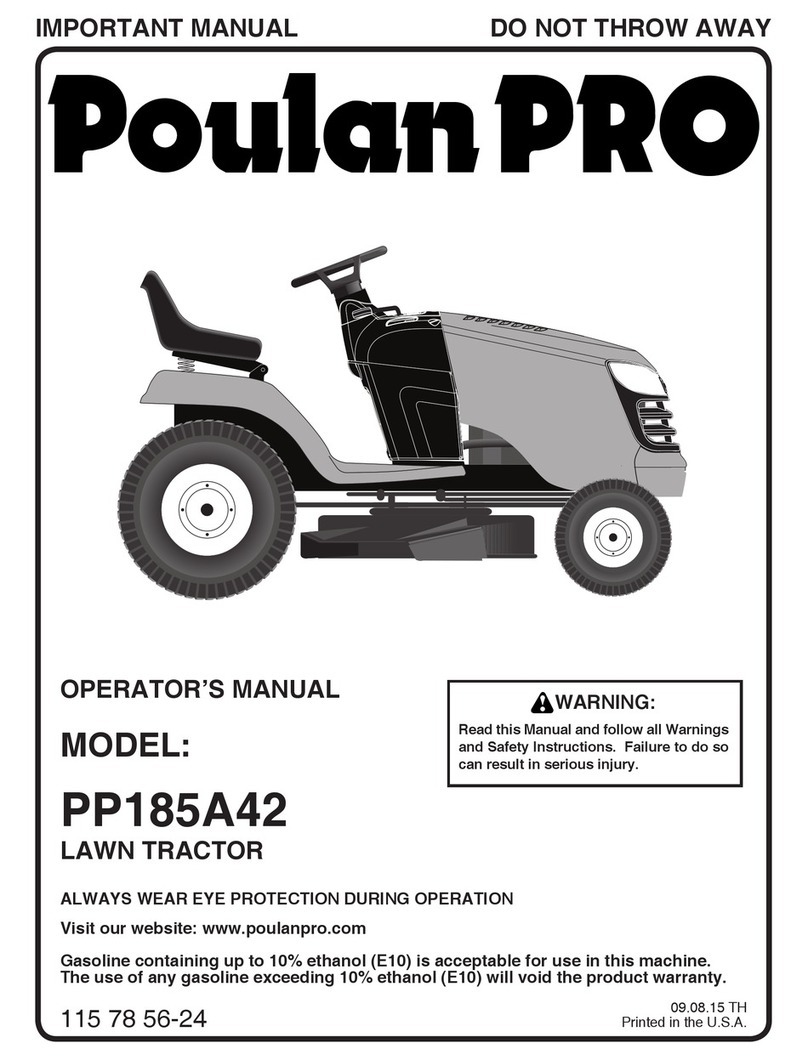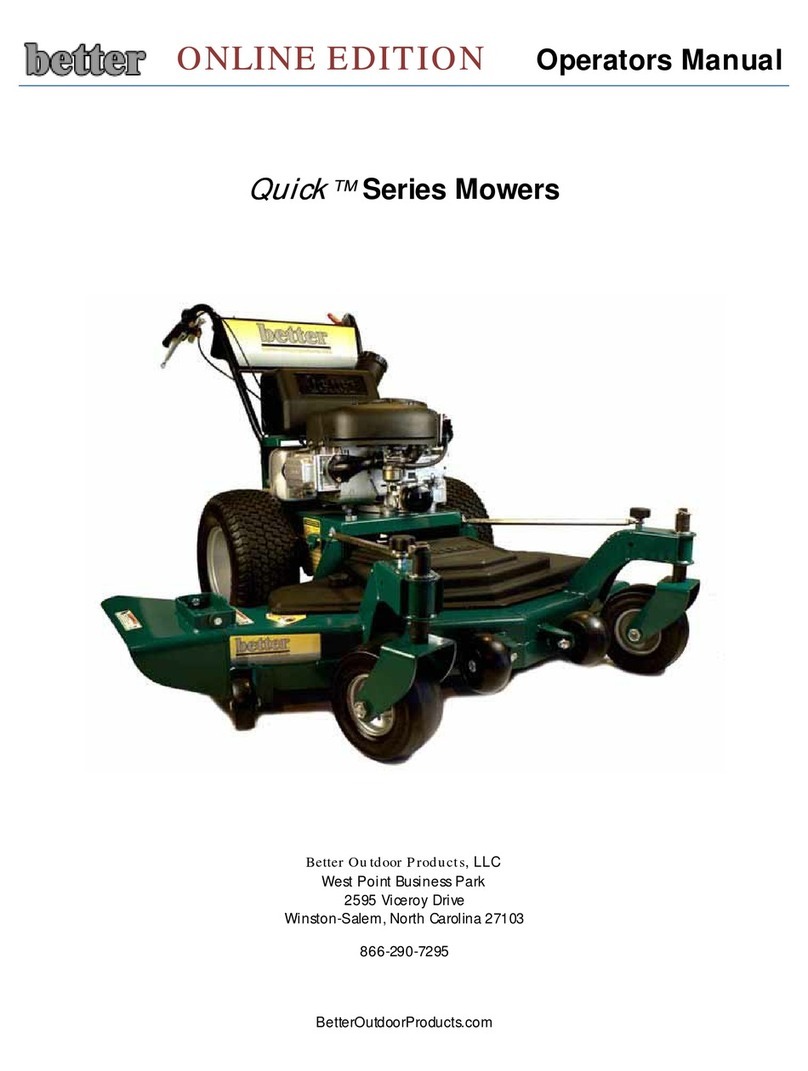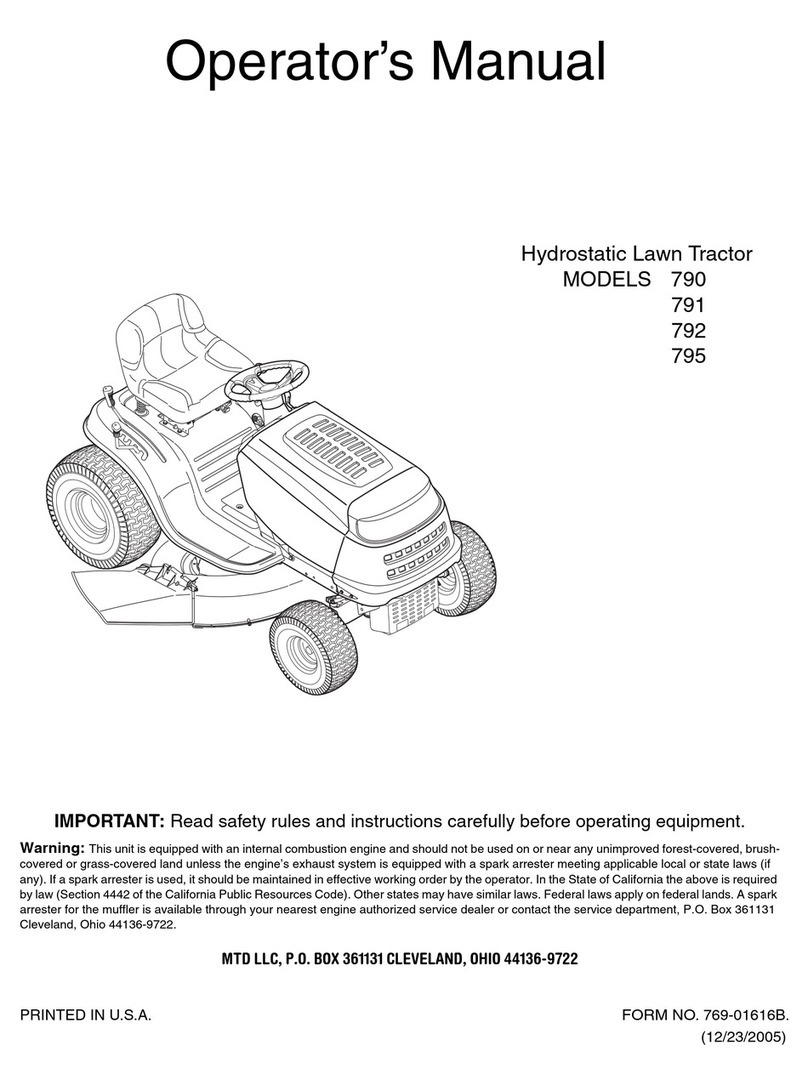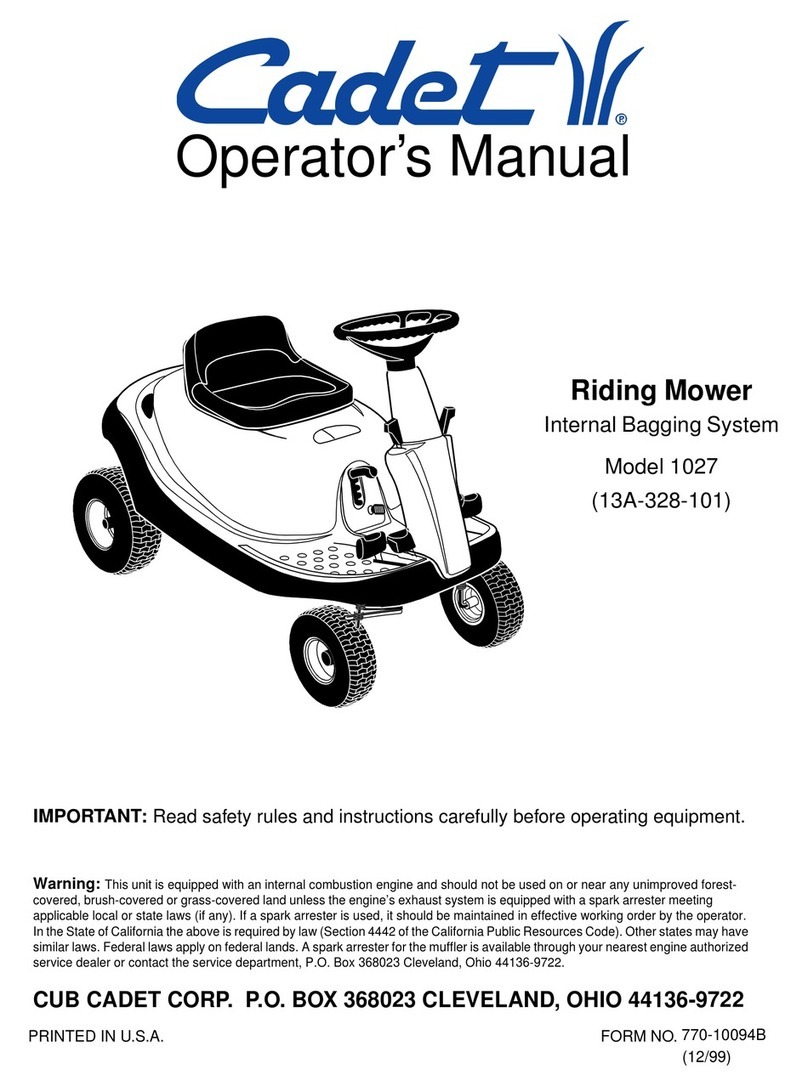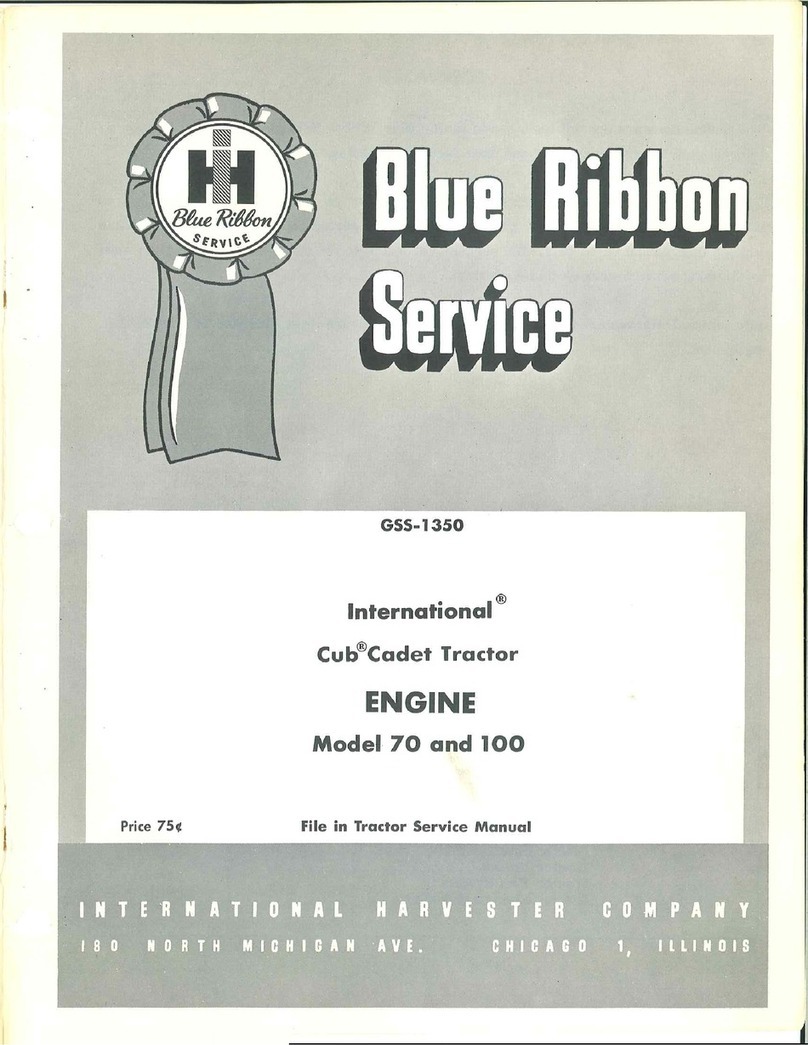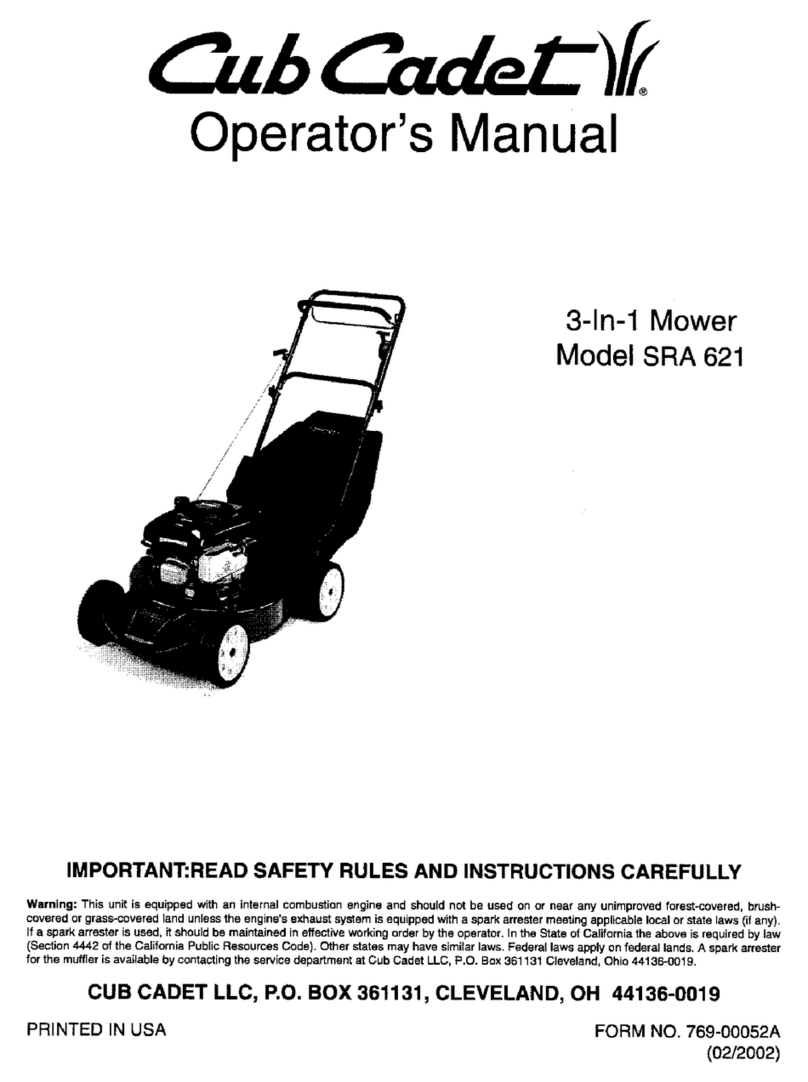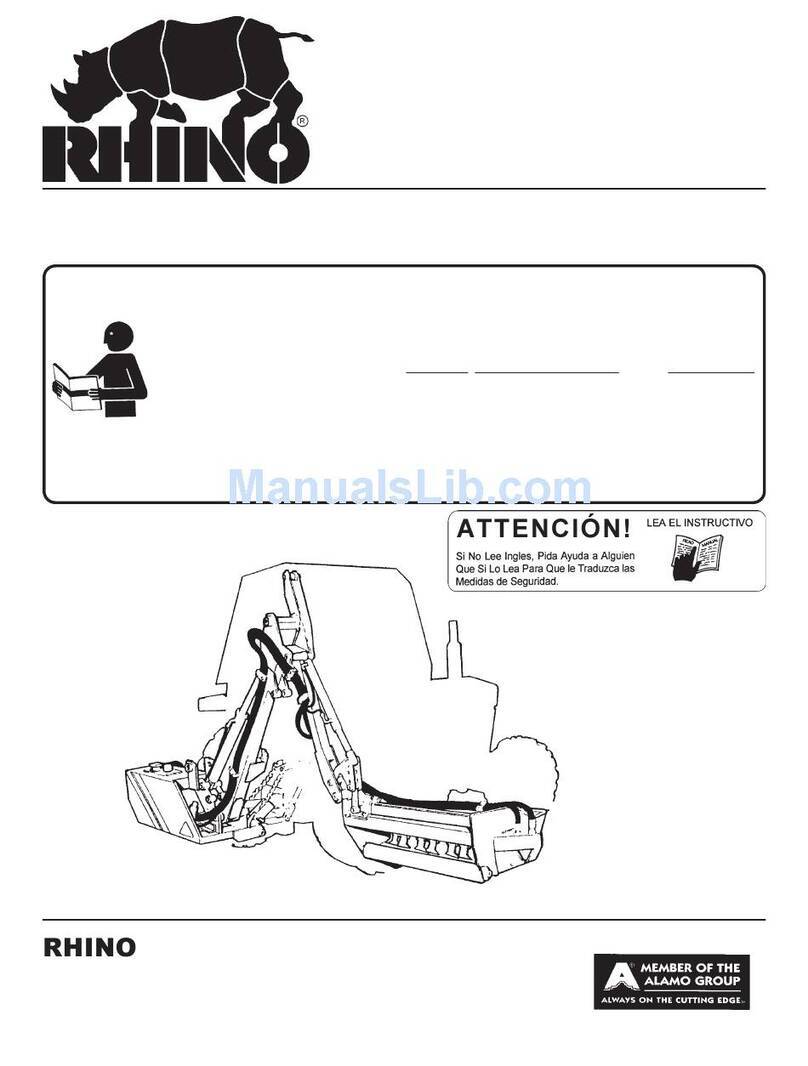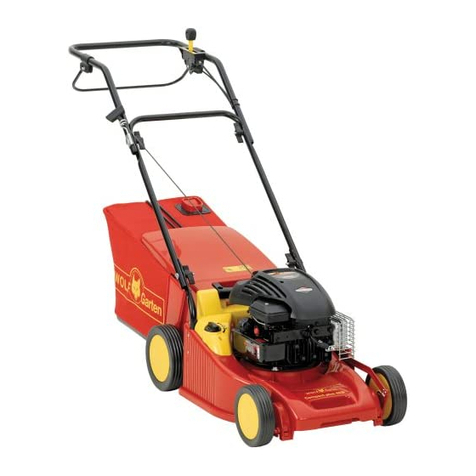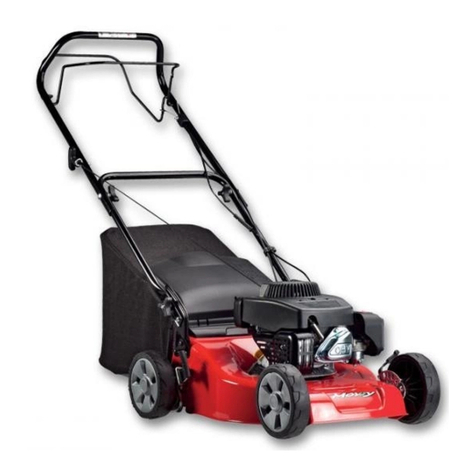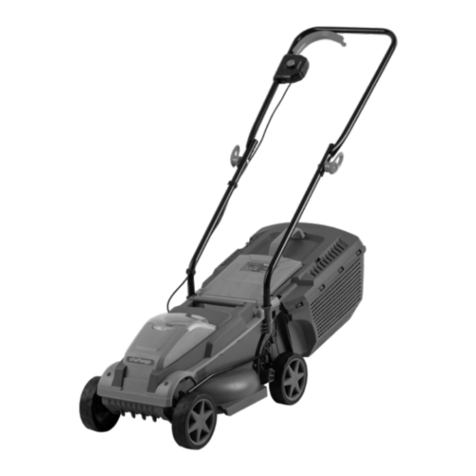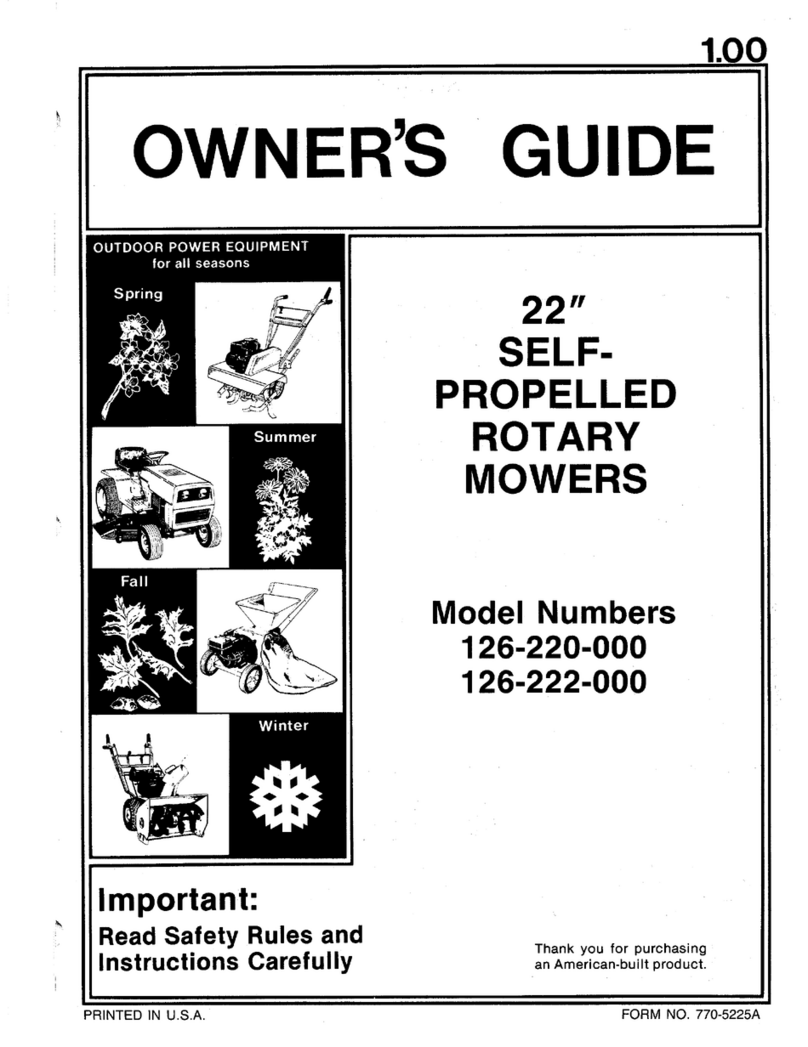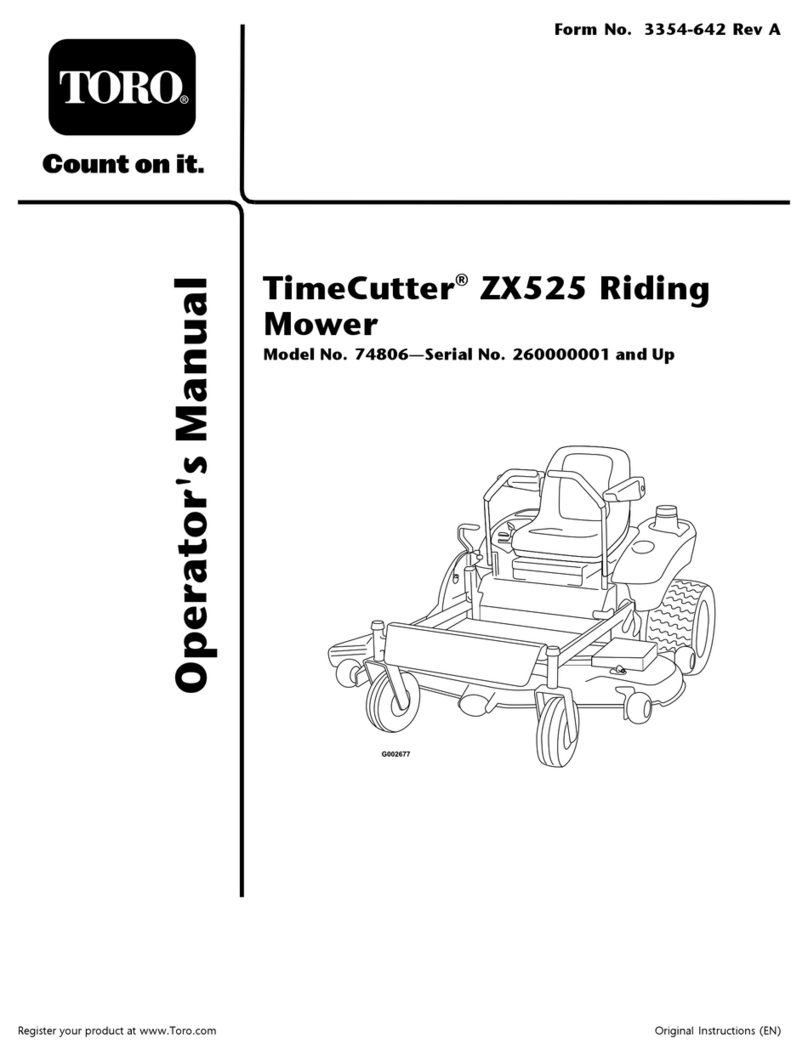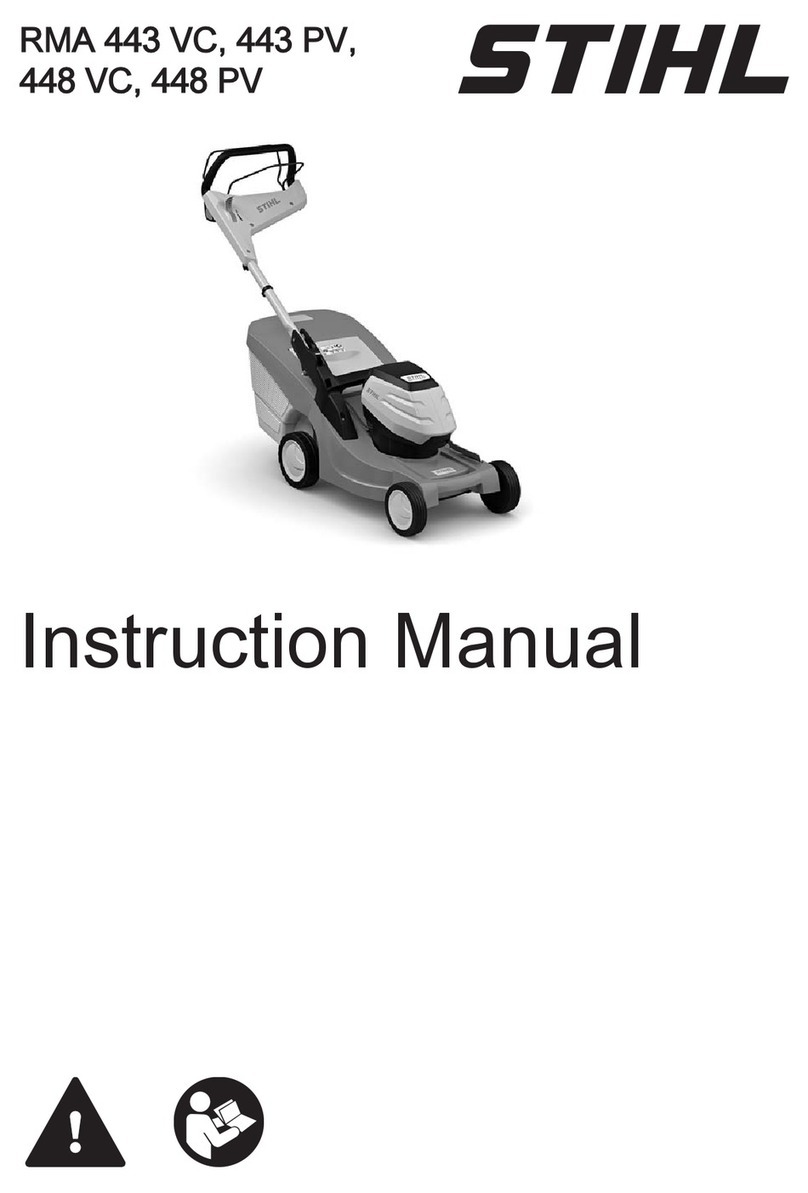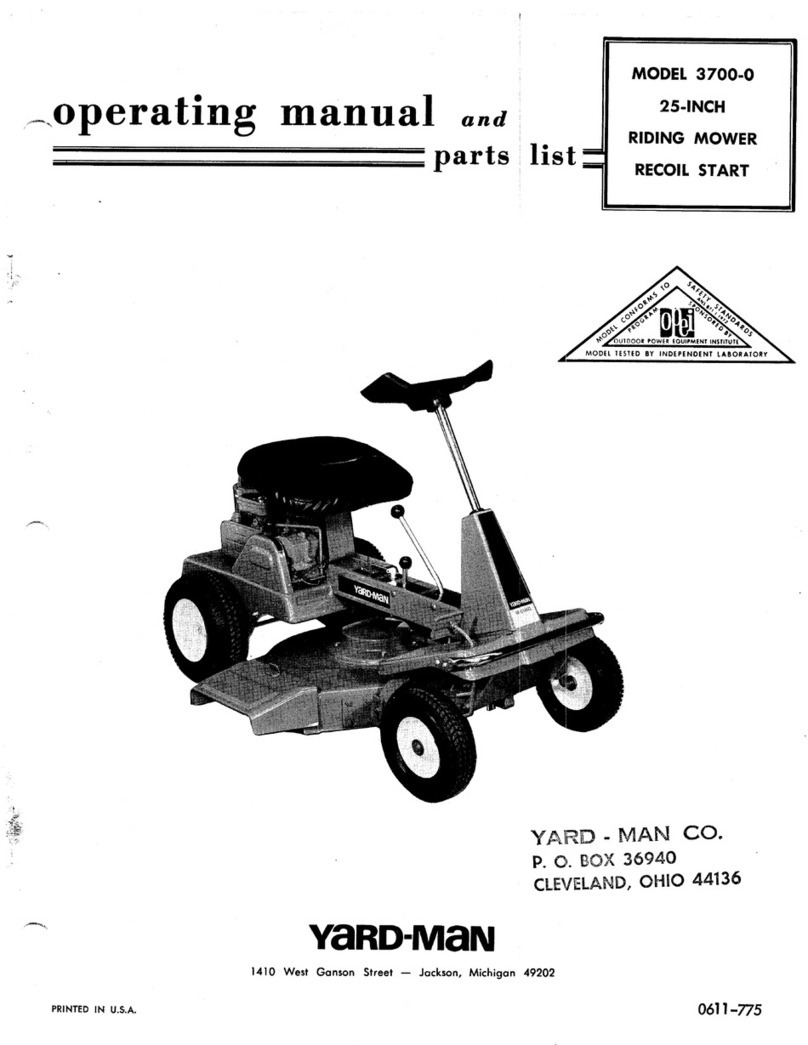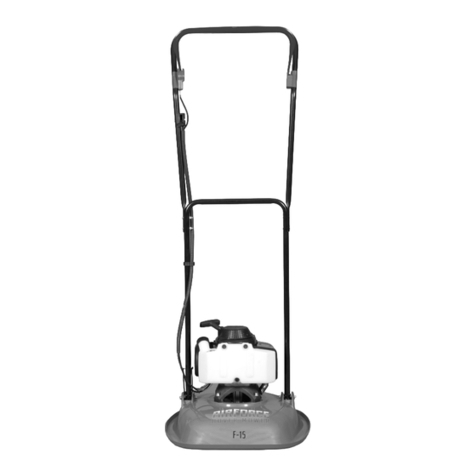
5
3. Always be sure of your footing. A slip and fall can cause serious
personal injury. If you feel you are losing your balance, release
the blade control handle immediately, and the blade will stop
rotating within 3 seconds.
Do Not:
1. Do not mow near drop-offs, ditches or embankments, you could
lose your footing or balance.
2. Do not mow slopes greater than 15 degrees as shown on the slope
gauge.
3. Do not mow on wet grass. Unstable footing could cause slipping.
Children
Tragic accidents can occur if the operator is not alert to the presence
of children. Children are often attracted to the mower and the mowing
activity. They do not understand the dangers. Never assume that
children will remain where you last saw them.
1. Keep children out of the mowing area and under the watchful
care of a responsible adult other than the operator.
2. Be alert and turn mower off if a child enters the area.
3. Before and while moving backwards, look behind and down for
small children.
4. Use extreme care when approaching blind corners, doorways,
shrubs, trees, or other objects that may obscure your vision of a
child who may run into the mower.
5. Keep children away from hot or running engines. They can suffer
burns from a hot muffler.
6. Never allow children under 14 years old to operate a power
mower. Children 14 years old and over should read and under-
stand the operation instructions and safety rules in this manual
and should be trained and supervised by a parent.
Service
Safe Handling Of Gasoline:
1. To avoid personal injury or property damage use extreme care
in handling gasoline. Gasoline is extremely flammable and the
vapors are explosive. Serious personal injury can occur when
gasoline is spilled on yourself or your clothes which can ignite.
Wash your skin and change clothes immediately.
2. Use only an approved gasoline container.
3. Never fill containers inside a vehicle or on a truck or trailer bed
with a plastic liner. Always place containers on the ground away
from your vehicle before filling.
4. Remove gas-powered equipment from the truck or trailer and
refuel it on the ground. If this is not possible, then refuel such
equipment on a trailer with a portable container, rather than from
a gasoline dispenser nozzle.
5. Keep the nozzle in contact with the rim of the fuel tank or
container opening at all times until fueling is complete. Do not
use a nozzle lock-open device.
6Extinguish all cigarettes, cigars, pipes and other sources of
ignition.
7. Never fuel machine indoors because flammable vapors will
accumulate in the area.
8. Never remove gas cap or add fuel while the engine is hot or run-
ning. Allow engine to cool at least two minutes before refueling.
9. Never over fill fuel tank. Fill tank to no more than ½ inch below
bottom of filler neck to provide for fuel expansion.
10. Replace gasoline cap and tighten securely.
11. If gasoline is spilled, wipe it off the engine and equipment. Move
unit to another area. Wait 5 minutes before starting the engine.
12. Never store the machine or fuel container near an open flame,
spark or pilot light as on a water heater, space heater, furnace,
clothes dryer or other gas appliances.
13. To reduce fire hazard, keep mower free of grass, leaves, or
other debris build-up. Clean up oil or fuel spillage and remove
any fuel soaked debris.
14. Allow a mower to cool at least 5 minutes before storing.
General Service:
1. Never run an engine indoors or in a poorly ventilated area.
Engine exhaust contains carbon monoxide, an odorless and
deadly gas.
2. Before cleaning, repairing, or inspecting, make certain the
blade and all moving parts have stopped. Disconnect the spark
plug wire and ground against the engine to prevent unintended
starting.
3. Check the blade and engine mounting bolts at frequent
intervals for proper tightness. Also, visually inspect blade for
damage (e.g., bent, cracked, worn) Replace blade with the
original equipment manufacture’s (O.E.M.) blade only, listed
in this manual. “Use of parts which do not meet the original
equipment specifications may lead to improper performance
and compromise safety!”
4. Mower blades are sharp and can cut. Wrap the blade or wear
gloves, and use extra caution when servicing them.
5. Keep all nuts, bolts, and screws tight to be sure the equipment
is in safe working condition.
6. Never tamper with safety devices. Check their proper operation
regularly.
7. After striking a foreign object, stop the engine, disconnect the
spark plug wire and ground against the engine. Thoroughly
inspect the mower for any damage. Repair the damage before
starting and operating the mower.
8. Never attempt to make a wheel or cutting height adjustment
while the engine is running.
9. Grass catcher components, discharge cover, and trail shield
are subject to wear and damage which could expose moving
parts or allow objects to be thrown. For safety protection,
frequently check components and replace immediately with
original equipment manufacturer’s (O.E.M.) parts only, listed
in this manual. “Use of parts which do not meet the original
equipment specifications may lead to improper performance
and compromise safety!”
10. Do not change the engine governor setting or overspeed the
engine. The governor controls the maximum safe operating
speed of the engine.
11. Check fuel line, tank, cap, and fittings frequently for cracks or
leaks. Replace if necessary.
12. Do not crank engine with spark plug removed.
13. Maintain or replace safety labels, as necessary.
14. Observe proper disposal laws and regulations. Improper
disposal of fluids and materials can harm the environment.
Do not modify engine
To avoid serious injury or death, do not modify engine in any way.
Tampering with the governor setting can lead to a runaway engine
and cause it to operate at unsafe speeds. Never tamper with
factory setting of engine governor.
Average Useful Life
According to the Consumer Products Safety Commission (CPSC)
and the U.S. Environmental Protection Agency (EPA), this product
has an Average Useful Life of seven (7) years, or 60 hours of
operation. At the end of the Average Useful Life, buy a new
machine or have the machine inspected annually by an authorized
service dealer to ensure that all mechanical and safety systems
are working properly and not worn excessively. Failure to do so can
result in accidents, injuries or death.
2
Safe
Operation
Practices
WARNING
This machine is equipped
with an internal combus-
tion engine and should
not be used on or near
any unimproved forest-
covered, brushcovered or
grass-covered land unless
the engine’s exhaust
system is equipped with a
spark arrester meeting ap-
plicable local or provincial
laws (if any).
If a spark arrester is used,
it should be maintained in
effective working order by
the operator.
A spark arrester for the muf-
fler is available through your
nearest engine authorized
service dealer.
Notice regarding Emis-
sions
Engines which are certified
to comply with California
and federal EPA emission
regulations for SORE (Small
Off Road Equipment) are
certified to operate on regu-
lar unleaded gasoline, and
may include the following
emission control systems:
Engine Modification (EM)
and Three Way Catalyst
(TWC) if so equipped.
